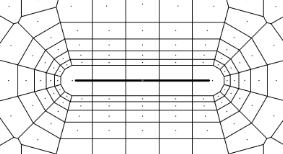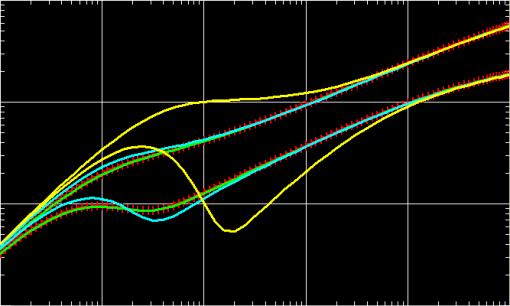Basic HTML Version




KAPPA Consortium on Unconventional Resources – Draft – 7
th
Feb 2011
p5/10
D – How we got to where we are
We are here because we had a fortuitous jumpstart. In 2000 we worked on the problem
without even knowing it. We designed a numerical model that would work on well test data,
using an unstructured grid in order to generate pressure responses on a logarithmic time
scale. The grid was calibrated and consistent with analytical models whenever such a model
was available. The automatic gridding was initially tuned for Pressure Transient Analysis in
Saphir. Later we increased our range of applications and adjusted the numerical model by
using coarser grids for Production Analysis (Topaze) and History Matching (Rubis).
X-Y cross-section of the grid around a horizontal well in Saphir / Topaze / Rubis
In the background, the well-to-cells connection was adjusted on the coarser grids by making a
real-time comparative simulation between such coarse grid and the refined well test grid. At
early time the coarse grid response would be inaccurate, however the well index of the coarse
grid was adjusted to match the late-time response of the well test grid.
Coarse grid calibration
Initially we assigned a grid setting for each software module (Saphir, Topaze and Rubis)
irrespective of the permeability of the reservoir. The assumption was that, for a normal range
of permeability, the grid in the relevant module would suffice. The geometry of the cells would,
or would not, determine which behavior would be detected. Everything was fine until we
started working on shale gas.
For a micro-Darcy or nano-Darcy formation, even the refined grid developed for pressure
transient analysis was insufficient to match the long term shale gas production decline. We had
to ‘hyper-refine’ our grids when dealing with shale gas, even for relatively large time steps.
This work, to be released with Ecrin v4.20, is complete and was used in the WEB document.
In v4.20, due for release in Q3-2011, the scaling of the automatic grid will be adapted
dynamically to the permeability around the well and the smallest required time step. The size
of the smallest cell close to the well is defined by an equation similar to the one for the radius
of investigation of a well test. This adaptive gridding is now able to cover automatically any
range of permeability, even in the extreme. Adding nonlinearity is then relatively easy.

